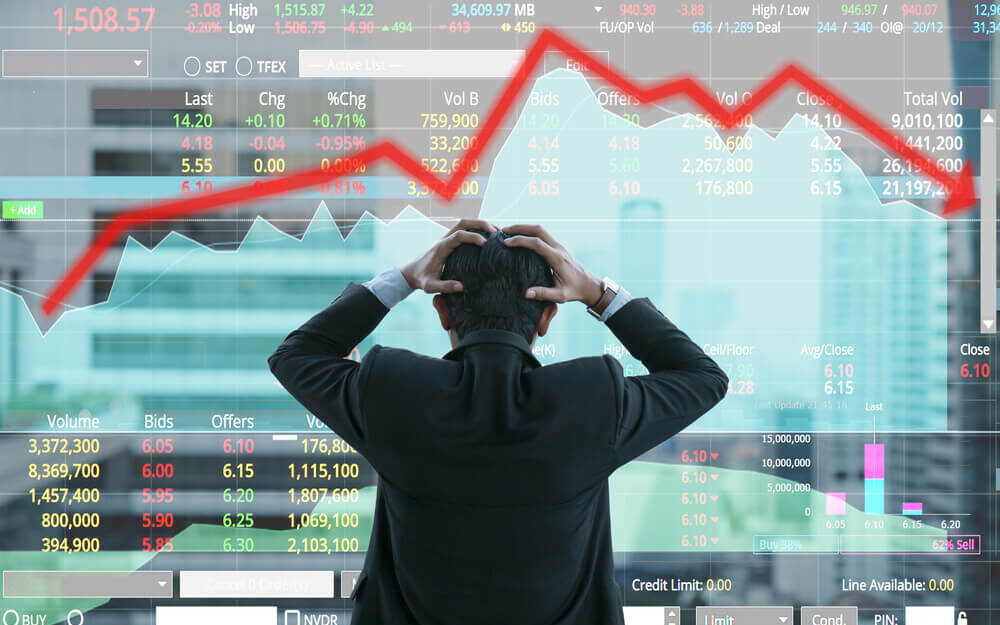It got nasty on Monday.
At one point, the Dow was down over 900 points. That marked the biggest intraday drop since April.
As for the cause … pick one:
- COVID-19 cases are rising again in Europe and the U.S., bringing the possibility of a new round of lockdowns. At the very least, they slow the economic recovery.
- Then there is the U.S. presidential election. Depending on who you ask, the winner of the November election will either cause the market to push to new highs almost instantly or crash to multi-year depths.
- Or maybe, after enjoying one of the fastest advances in history, the bull market was due for a much-needed correction. As I write this, the major market averages are all getting close to the 10% decline that “officially” marks a correction.
It’s easy to get scared on a day like that.
It’s unsettling to see that much red on your screen. It brings back uncomfortable memories of the March meltdown … and every other gut-wrenching bear market.
That’s where we come in. The Money & Markets team, myself included, are here to guide you through the rough patches in the stock market so you are ready for any situation.
Today, I’ll share a go-to investing plan: four tips to manage your emotions when the market punches you in the gut.
Sell-Off Tip 1: Accept That We’re Emotional
The great Warren Buffett used to be a terrible public speaker. He was scared to death of speaking in front of a crowd. In his own words, he took a Dale Carnegie class: “Not to prevent my knees from knocking when public speaking but to do public speaking while my knees were knocking.”
You can’t will yourself into not being scared or emotional. You have to accept that you’re emotional and find creative ways to manage it.
I’ll be the first to admit that I’m not some perfectly rational Vulcan from Star Trek. I get as wildly emotional as the next guy. But that’s why these tips are important. They’ve helped me over the years, and they can help you too.
Let’s jump into it.
Sell-Off Tip 2: Have an Investing Plan
There are infinite investing strategies, and most of them can be successful if implemented correctly. But all successful strategies involve a plan.
I’m primarily a value and income investor. My colleague Adam O’Dell is primarily a trend-following technician. But Adam and I agree that every investment needs rules.
And the most important rule in your investing plan is knowing when to sell.
For me, the only way to do this objectively — and thus manage my emotions — is to use a stop-loss order. When a stock I own closes beneath the stop price, I sell and move on.
I can sell for other reasons too. If the stock rises higher than I think is warranted, or if I think my money is better invested elsewhere, I can sell and move on.
But here’s the key: You can’t make exceptions on the downside. Stop-losses are only effective at stopping losses if you actually honor them.
Sell-Off Tip 3: Keep Position Sizes Reasonable
The biggest mistake I see most investors make is putting too much money in a single stock. When you have large, outsized positons, you feel every tick of the stock price. And falling prices maximize your emotional response, making it easier to make bad decisions.
You might hold on to a losing position longer than you should because realizing a loss is too painful. Or you might sell too soon, and not give the stock time to turn around, because you got spooked out of the position.
There is no “right answer” on what a reasonable position size is. My personal rule of thumb is 3% to 5%.
Think of it like this: If a stock makes up 5% of your portfolio and it loses 20% of its value, the damage to your overall portfolio is only 1%. If it goes to zero, you’ve only lost 5%. That’s not bad. No real harm done.
But let’s say you have half your portfolio in a single stock and it lost 20%, 50% or even 100%. Well, you might not recover from losses like that — at least not in any reasonable time frame.
Sell-Off Tip 4: Don’t Put Your Entire Life Savings Into the Stock Market
My grandfather made a killing in Walmart. He was an early investor, and his profits from the stock helped to pay my rather hefty tuition bill at Texas Christian University. (Go Frogs!)
As things worked out, that single stock made his retirement. But that was luck, and he never planned it that way.
His financial plan had roughly a third of his portfolio in stocks, a third in bonds and the rest in cash and real estate. He owned a small warehouse in Fort Smith, Arkansas, and he planned for the rents to cover retirement living expenses for him and my grandmother.
Look at your investments the same way.
You might get fantastically lucky and make millions in the stock market. But you might also see your stock portfolio go up in smoke. There have been multiple stretches of a decade or more where the stock market went nowhere — or even lost money.
So, don’t put all of your eggs in one basket. Play the stock market casino. (I certainly do!) But also have some of your funds invested outside of the stock market.
The stock market looks rough right now. But having an investing plan, and sticking to it, means you’ll have a better shot at managing the pain of a downturn. And it gives you the best chance of success when the market rises out of the rubble again.
Money & Markets contributor Charles Sizemore specializes in income and retirement topics. Charles is a regular on The Bull & The Bear podcast. He is also a frequent guest on CNBC, Bloomberg and Fox Business.
Follow Charles on Twitter @CharlesSizemore.





